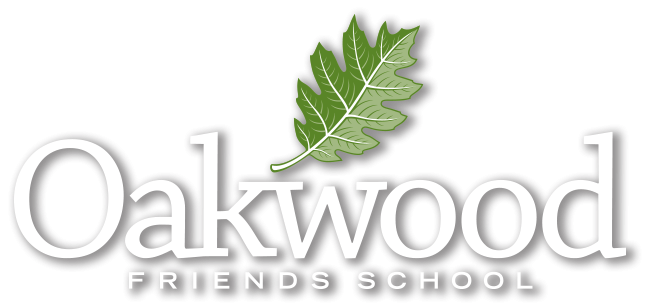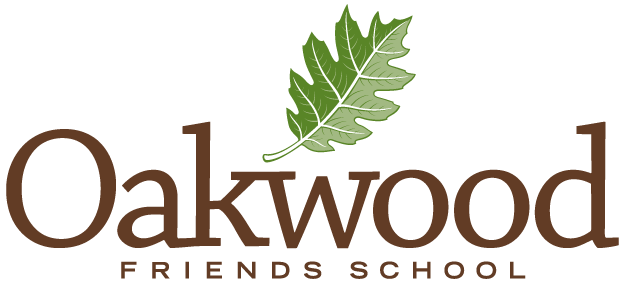What's Happening Around Campus
Acclaimed Journalist and Author Juan Williams ’72 Dedicates Plaque of Appreciation to Oakwood
October 03, 2023
Acclaimed journalist and author Juan Williams, an alumnus from the Class of 1972, returned to campus to dedicate a plaque to Oakwood in recognition of the school’s historical support of Black and Latino students and its commitment to racial justice throughout history. With a career in media spanning decades including work at The Washington Post, NPR, as a political analyst for Fox News, and as a weekly columnist for The Hill. Juan has received numerous awards for his writing and investigative journalism. He is also the author of six books, including the non-fiction bestseller, “Eyes on the Prize: America’s Civil Rights Years, 1954-1965” and “Thurgood Marshall: American Revolutionary. Juan has also written numerous articles and has contributed to many national magazines, including: TIME, Fortune, The Atlantic, The New Republic, Ebony and GQ.
Born in Colon, Panama. Juan moved to Brooklyn at the age of four. In 1969, he received a scholarship to attend Oakwood and then went on to Haverford College where he graduated with a B.A. in philosophy. Juan has remained close to Oakwood throughout the years and is a dedicated supporter of the school.
Below are the remarks he shared with members of Oakwood’s Board of Managers at their recent meeting, as well as with a group of students, administrators, faculty and friends. We look forward to further opportunities to recognize his gift to the school on a broader scale at events throughout the coming year.
***
Let’s open with a heart full of “Thank You.” Thank you to Oakwood Friends School. Thank you to the people who defined this school — today, yesterday and yesteryear – by its love for all children. Thank you to Chad, Beth Porter, Elaine, Julie, Matthew as well as board members, faculty and students for staying true to that basic Oakwood principle – love of all children. Thank you, Oakwood Friends, for bringing Quaker principles to life with this legacy of love for generations of young people. Today my friend, Barrett Nnoka, class of 1974 stands with me in offering a very personal ‘Thank You.’
Fifty years ago, at a troubled, dark time of racial turmoil in America, Oakwood opened its doors young Black and Latino people, such as Barrett and me. Oakwood took a risk for racial justice by offering Black children access to a first-rate education. That was Quaker witness in action. That was faith come to life for all to see.
Let me be clear about why we are here today. Barrett and I are old men. But we were not the first Black students here. Ninety years ago, in 1933, Oakwood Friends admitted Frederick Yergan, a 12-year-old Black child. He came here for 8th grade. Oakwood stands tall among American schools, as among the first private, preparatory schools to integrate students. And it stands tall as the first Quaker school to award a diploma to a Black student in 1938 when Yergan graduated. Fred’s brothers, Charles and Max, also graduated from Oakwood friends. All three became medical doctors, two of them surgeons. Every life they healed was touched by Oakwood Friends School.
More Black students followed. The word got out about Oakwood Friends. The sons of the presidents of two historically Black schools in the south, Fisk University and Dillard University, both made their way to Poughkeepsie to graduate from Oakwood Friends. This little Quaker school became an oasis for them. Their parents saw a safe harbor at a time when even the most highly educated, socially skilled Black parents struggled to protect their children from the wounds of harsh racial segregation in Tennessee and Louisiana. Their stories are one part of the Oakwood legacy.
Oakwood Friends was also a rock of hope for so many young women early in the 20th century. Oakwood Friends became a place where female minds were treated as equal to any in the classroom. It was a place of saving grace for Marion Yoshiwara. She came to Oakwood in 1945 after her family faced a mountain of despair, battling racism after being released from confinement in a World War II camp in Colorado after our government removed Japanese Americans from their homes. Oakwood Friends offered her parents a school that respected them and Marion.
Then came the 1954 Brown Decision. The Supreme court ruled that racial segregation in schools generates a quote feeling of inferiority end quote — specifically in Black children. The chief justice, Earl Warren, added that racially separate schools are “inherently unequal”. Oakwood Friends’ heard that cry for justice for all and acted. Six years after the Supreme Court ruling and, in the midst, continuing anger from white segregationists, the leaders of Oakwood Friends took the bold step of admitting 13 Black students. The school acted even as massive resistance to the Brown Decision kept most of the nation’s schools, public and private, racially segregated.
Then in 1967 more than 150 race riots shook the country. At that violent, difficult moment, Oakwood Friends took an exceptional stand. Setting itself apart as a Quaker witness – The school admitted 22 Black students. Also, in 1967 Oakwood history teacher, Norm Keiser, introduced one of the first Black history classes taught in the U.S. White students at Oakwood set a record by giving a check for $1600 to the Poughkeepsie branch of the NAACP. It was the largest amount received by the NAACP from any school or college in New York state, according to the Poughkeepsie Journal.
From 1968 – the year of Dr. King’s assassination – to 1977 Oakwood Friends admitted 202 Black and Latino students. It was a defiant stand against school segregation. Friends’ meetings around the country raised money for many of those Black and Latino students to pay tuition so they could afford to attend Oakwood. And the school did not hide its work, its open door for school integration. Oakwood Friends let its light shine at that dark moment by reaching out to minority parents and students through a program known as ABC – A Better Chance.
Barrett and I were among the students who arrived in the early 70s. When I showed up in the fall of 1969, I was a skinny kid with a big afro. I looked like a dandelion! My prize possession was a pair of purple converse sneakers. Coming from Brooklyn, it was not just my race that made me feel like an outsider. This was not Section 8 housing in a crowded city. I couldn’t believe the campus – the towering pine trees, the emerald green playing fields, the library, the nurturing teachers and staff, the big, beautiful houses in Kingwood Park.
And my white classmates were standouts. I was here with kids coming from much better elementary and junior high schools. My classmates were children of Park Avenue, children who vacationed in Europe, children whose parents were college graduates and corporate leaders. They were hippies with tie-dyed shirts, long hair and sandals. They played the latest Bob Dylan records. Jimi Hendrix and purple haze was a new culture for me.
Would I be able to make it? Was I smart enough? I am an immigrant Black kid born in Panama. My mom brought three kids to Brooklyn when I was 4. In New York, my mom worked in the garment district; my dad trained boxers and did some accounting. My parents did not graduate high school. But my parents believed in education. They loved their children and one reason they wanted us to come to the U.S. was that my sister was about to enter high school.
When it was my turn to go to high school, I was on my way to a mammoth city school with students in tracks that amounted to a new form of racial segregation. My family had no money and little option. But my sister, a bright woman, won a scholarship to a Quaker college, Swarthmore. My brother then won a scholarship to another Quaker school, Haverford. They worried that Brooklyn street life was taking me in the wrong direction. At my sister’s Quaker college, she heard about the Quaker prep schools – Westtown, George School and that led to Oakwood.
Oakwood made a place for me as it did for Barrett and others. Oakwood did not just open its classroom doors to students of color. It opened financial support for tuition. It opened dormitory rooms to integration. It opened the dining hall. There was a mixing of people, all classes and races and nationalities, that was inspiring to me at the time. It remains exceptional to this day.
Oakwood’s daring actions a half-century ago stands as eternal testimony to Quaker values of integrity and speaking truth. It celebrated that of God in Barrett, in me, in hundreds of black and brown children, in all children.
So, Thank you. I opened these remarks by offering thanks. Let me close by saying – Thank you. Let this plaque stand here for years to come as a bright light of enduring thanks to Oakwood heroes and heroines of the past. Thank you to Oakwood Friends’ people of today, and their defiant willingness to celebrate this schools’ proud legacy and sacrifice again to confirm the power of Quaker witness – Oakwood as a light in this world. Thank You.
***
 News & Events
News & Events




